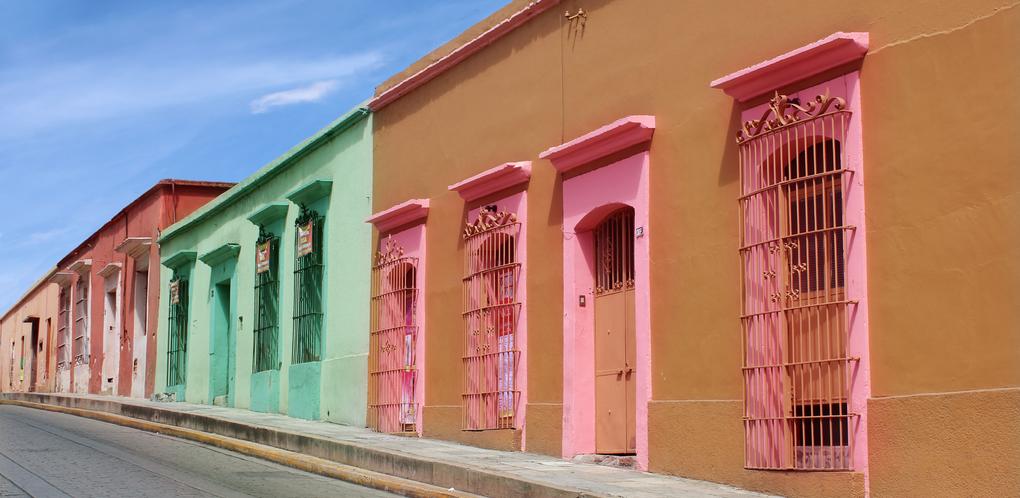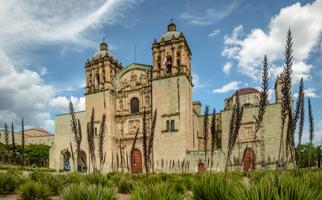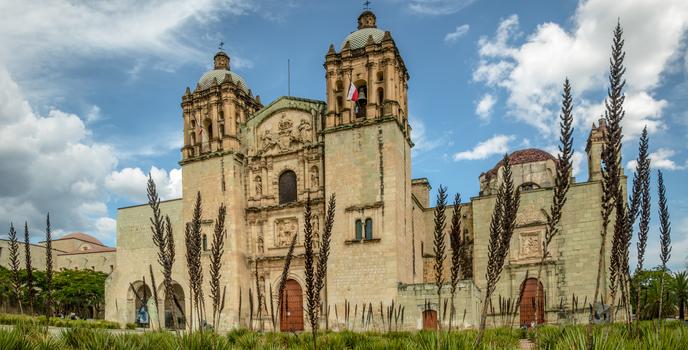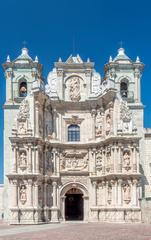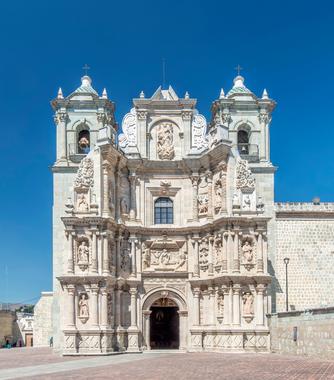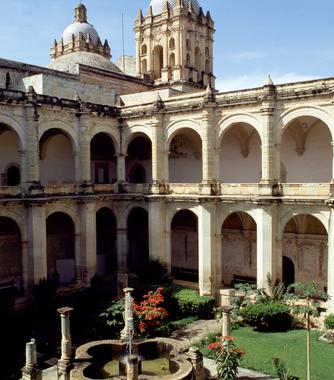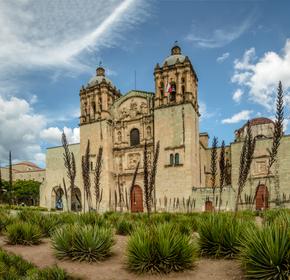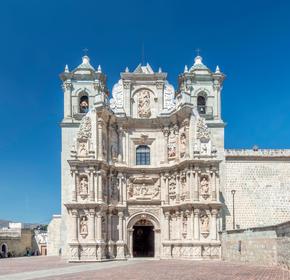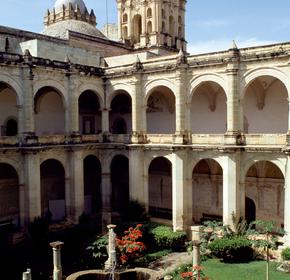1. Church of Santo Domingo de Guzman: Spend an Afternoon at the Abbey
A complex system of cloisters, courtyards, abbeys, and silent pews make up the Church of Santo Domingo de Guzman, which was formerly a monastery. The outside, however, is an ode to Baroque ecclesiastical architecture. It was founded by the Dominican Order and, in modern day, also houses a museum dedicated entirely to pre-Columbian artists and artifacts. It also has an ethnobotanical garden where traveler can stroll and take in numerous species of the native Oaxacan flora.
2. Basílica de Nuestra Señora de la Soledad: Where Tranquility is Celebrated
The Basilica of Our Lady of Solitude, as it is better known, was built in dedication to the patron saint who is said to watch over and protect Oaxaca. Its architectural marvels include intricate, expert, and delicately carved figurines, gorgeous Baroque-style flourishes, and tall spires as part of its facade. Not for nothing, this celebratory Basilica was noted as a World Heritage site by UNESCO and purposely built low to the ground to survive local earthquakes.
3. Oaxaca Ethnobotanical Garden: Weird, Winding and Wonderful
Like a strange, other-worldly cross between a desert and a forest, the Oaxaca Ethnobotanical Garden is a wonder all its own. Francisco Toledo's farewell, swan song to Oaxaca, this winding trip through Oaxacan culture, indigenous arts and, amongst everything else, its native foliage is sure to leave any visitor stunned. Here, zigzagging pathways guide those passing through and consecutive agave plantings are not a mistake but, rather, an intentional commentary meant to signal the importance of this plant to the culture. Nothing is a mistake at the Oaxaca Ethnobotanical Garden, but it would surely be a mistake to miss them.
4. Monte Albán: A Shining Mountain of the Past
The Zapotec called Monte Albán something else entirely: the sacred mountain of life. And, indeed, their lives revolved around what is now a pre-Columbian archaeological site, rising tall in the Valley of Oaxaca. Much of their ways have been preserved and the famous Monte Alban pyramid complex draws travelers from near and far. Though its history is long and complex, the ruins have been abandoned and uninhabited since around 750 to 1000 AD. Yet major sites such as the Main Plaza, the impressive stairs leading to the South Platform, and the Altar remain behind to offer clues about its former inhabitants.
5. Museo de las Culturas de Oaxaca: Preserving an Ancient Culture
There is a sense of continuity that the Museum of Oaxacan Cultures establishes that would otherwise simply be lost to the sands of time. An impressive collection of exhibits, artifacts, crafts, installations, and excavations show a clear thread from the pre-Hispanic through to Colonial periods. This is partially because of the curatorial effort put through by museum organizers as well as the way the viewer must move through the rooms. Thus, visitors are guided on a path of progression: they move from Zapotec to Mixtec, to pre-Hispanic and Spanish civilizations, showing how the latter re-used and re-built upon foundations of the former.

